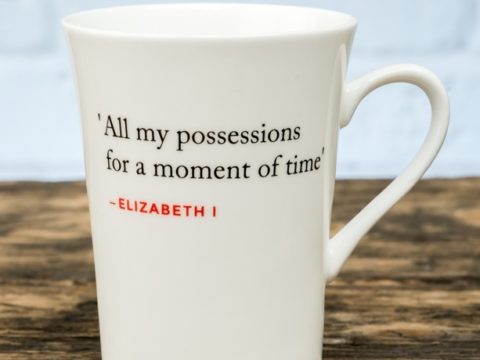Margaret Douglas: Life Story
Chapter 7 : Courtship
By 1535, Margaret was 20 years old. This was an unusually advanced age for a noblewoman not to be married. The tentative arrangements that Queen Margaret had made for her ten years before had come to nothing, and there did not seem to be any definite prospects for her, despite the conversation with the French Ambassador.
Margaret, perhaps inheriting the romantic streak of her mother and uncle, was not content to wait, and sometime during late 1535 began a relationship with Lord Thomas Howard. Lord Thomas was the much younger half-brother of the Duke of Norfolk, with whom he confusingly shared his Christian name. Perhaps with twenty previous children, his father had run short of inspiration. Lord Thomas was some four years older than Margaret and had been honoured by Henry in being permitted to hold the canopy of estate over the baby Elizabeth at her christening. At Christmas Howard and Margaret exchanged gifts - he gave her a cramp ring which seems to have been a fairly common gift amongst friends, and she gave him a miniature of herself.
It has been said that to begin with, Henry and Anne encouraged the match. This is based on the evidence of Queen Margaret’s later letter in which she says that Henry had ‘advised’ the match, however, the word advised at that time could also mean ‘been informed of’. Nevertheless, there is no definite evidence that Henry was aware of the young couple’s relationship at the time.
For Queen Anne, it would definitely be a welcome prospect. Any closer ties that Anne could make between her family and the King's would be to her advantage, and Henry, still eager to promote his second marriage as valid, and to raise Anne up in public estimation would also have seen the benefits. Lord Thomas’ elder brother, Lord William Howard, had been dispatched in 1534 as Ambassador to Scotland where he proceeded to develop good relations with Margaret’s mother, Queen Margaret, who was now influential in her son’s government. Margaret, as well as being in love, would have been well aware that marrying the Queen's uncle would be a good match for her.
In a complete volte face from Henry, Anne was disgraced, degraded from her rank and executed all within a period of weeks in spring 1536.In the aftermath of Anne's execution, and the annulment of a marriage that apparently was not valid for an unspecified reason, Henry was left with two illegitimate daughters, an illegitimate son, and the offspring of his sisters.The numbers of possible claimants to the throne was reduced by the death on 31 May of Henry Fitzroy.
The Act of Succession of 4th July 1536, passed after Anne's death had the effect, surely not Henry’s ideal scenario, of making Margaret his lawful heir, James being excluded as born out of the realm. The actual wording of the Act conferred the succession on the children of Henry’s new queen, Jane Seymour (whose train Margaret had held at her wedding), but since she was not even pregnant at this time, logically, in default of Mary or Elizabeth, had Henry died before Jane gave birth, the crown would have devolved on either James V or Margaret Douglas. At this point, Henry woke up to the fact that his niece was embroiled in some sort of love affair that had previously had his tacit acceptance, and for Margaret, her betrothal to Lord Thomas was now a source of danger. Fortunately, the match had not been consummated, which would have created a binding marriage.
On the 9th July, the members of the former queen’s household were questioned. Howard admitted to the relationship between himself and Margaret, saying they had been married 'de verbi di praesenti', but consummation had not taken place. Both Howard and Margaret were clapped in the Tower and an Act of Attainder was raced through Parliament against Howard, being both introduced and passed on the same day – 18th July 1536.
An Act of Attainder permitted the execution without trial of an individual accused of treason. Instituted in the early 1530s they became Henry's weapon of choice for disposing of recalcitrant relatives who had undertaken activities that, when they occurred were not crimes, but that Henry, in the aftermath, disapproved. Howard was convicted of an attempt to
'interrupt ympedyte and lett the seid Succession of the Crowne' .
The act imposed the death sentence on Howard and also forbade the marriage of any member of the King's family without his permission. Margaret was not included in the Act, and it was believed that the non-consummation of the marriage saved her.
Bizarrely, Sir Francis Bigod, who led the final phase of the uprisings around the Pilgrimage of Grace in early 1537, claimed in his statement that it was commonly supposed that the Act of Attainder against Thomas Howard had been instigated by Cromwell, as he wished to marry Margaret himself. It is hard to believe any credence could be given to such a rumour.
Lady Margaret Douglas
Family Tree








